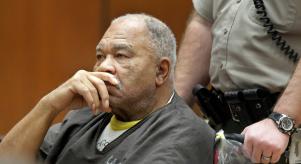
London Bombings from the IRA to 7/7
Throughout history, London has had its fair share of devastation. From the Great Fire of London in 1666 to the Great Flood of 1928 and from the Great Plague of the 15th century to periods of famine across the centuries - London has seen it all and suffered the consequences. However, where those examples are largely organic and not the result of a small group or a single individual, the bombings that have afflicted London’s past can be harder to fathom, given that they were deliberate attempts by human beings to inflict as much pain as possible on others, usually to further a political point.
The list of London bombings is so long, even in the last 50 years alone, that an exhaustive list would be difficult to compile. Instead, let’s take a look at the varying interests that conspired to inspire these campaigns.
The Suffragettes
Because of their noble cause, The Suffragettes are remembered predominantly for furthering women’s rights. Much is made of their peaceful activism - chaining themselves to railings and stepping in front of horses - that the more violent aspects of their actions go somewhat unacknowledged.
Called ‘The Suffragette Outrages’ by the national press, their campaign of violence included horsewhipping politicians in the street, destroying works of art, sabotaging telephone lines and post boxes and, even more destructive, setting and detonating home-made bombs in public places. Their arson and bombing campaign escalated in 1913 to 1914 in which time they targeted well-known public buildings with the principal aim of destroying property. Buildings hit by the women’s rights group included churches such as St Martin-in-the-Fields in Trafalgar Square, London, and Rosslyn Chapel in Scotland.
From the early 1970s to the start of this century, the Irish Republican Army (IRA), the Irish National Liberation Army (INLA) and latterly The Real IRA launched a series of attacks in the UK, with the first coming shortly after the Bloody Sunday killings which took place on the 30th January, 1972. Their first targets were military buildings and personnel but on June 17th, 1974 their mission extended into London. The 900-year-old Westminster Hall was the first building to suffer an explosion and from there, the campaign raged for 30 years. October of 1974 saw four bombings including the infamous Guildford Bombing and five fatalities were the result. On March 3rd, 1979, the IRA moved onto political targets and caused an explosion in a House of Commons car park - and as a result were successful in killing the Shadow Northern Ireland Secretary.
Bombings in London related to the conflict continued for many years until the Good Friday Agreement which saw the incidences almost completely end. Aside from the actions of The Real IRA, whose last London bombing occurred in 2001, it looks like the years of destruction have come to an end.
1999 Nail Bombings
Over three weekends in April 1999, London became victim to a brutal nail-bombing campaign which ultimately killed three people and seriously injured 140. The police eventually tracked down the bomber and arrested David Copeland - a lone attacker who had formerly been a member of the British National Party and the National Socialist Movement and who had neo-Nazi beliefs that led him to wish to inflict suffering on the black, Bengali and LGBT communities.
His first bomb was set off in Brixton Market, South London on April 17th, 1999. This area of South London is a diverse one and home to a large black population. Copeland had packed his bomb with four inch nails which caused grievous injuries to 48 people. One week later, Copeland targeted the street market at Brick Lane in East London which houses a large portion of the capital’s Bangladeshi population. Having set the timer for the wrong day (the Sunday following the day of the explosion would have seen more victims), Copeland abandoned the bag and it was taken to a police station by a man assuming it was lost property. It exploded whilst in the boot of his car and injured 14.
It was Copeland’s final bomb which caused the most devastation. His intention was to strike at the heart of London’s gay community, so he picked Soho and the Admiral Duncan pub. Though the bar manager noticed and was investigating the contents of the bag containing the bomb, it was too late and it detonated, killing three people and injuring 79. Thankfully Copeland was imprisoned before he could target any more minority communities.
Bombings related to Middle East conflicts
The outbreak of terrorist actions in London related to Middle Eastern groups began with a campaign by Palestinian terror groups between 1968 to 1979 in which time the Popular Front for the Liberation of Palestine (PFLP) orchestrated a number of bombings as a reaction to the Israeli-Palestinian conflict. These included letter bombs being sent to and killing high-profile Jewish individuals, the hurling of mortar bombs at Jewish banking institutions and the Boxing Day bombing in 1983 of a Marks & Spencers supermarket by the Abu Nidal Organisation, which seriously injured two people.
Later on in the 1980s, Libya and Iran became the focus when groups from those nations claimed responsibility for attacks on the capital. One of the more high-profile incidents occurred in 1984 when the Heathrow Airport Bombing injured 22 people, with Libyan groups blamed for the explosion. Then towards the end of the 1980s, Iranian groups were held responsible when at first, in 1986, a shop in West London was bombed which sold videotapes and literature which expressed solidarity with those in opposition to the rule of Ayatollah Ruhollah Khomeini. A further Iranian-blamed explosion occurred in 1989 when a man accidentally killed himself and destroyed part of the hotel he was staying in as he prepared a bomb with which he planned to kill the controversial author, Salman Rushdie.
7/7
Perhaps the most impactful bombing in memory with roots tracing to the Middle East occurred on 7th July, 2005. This one-day campaign was formed of a series of suicide attacks, targeting civilian commuters as they made their way to work. Three bombs were coordinated to go off on different tube lines, with a fourth detonating on a double-decker bus.
With a devastating death toll of 52 Londoners killed, the incident has come to be known as the 7/7 Bombings and images from that fateful day continue to haunt the memories of residents of the capital.





